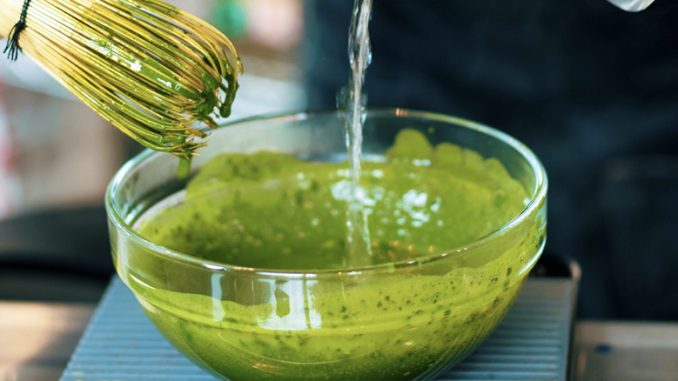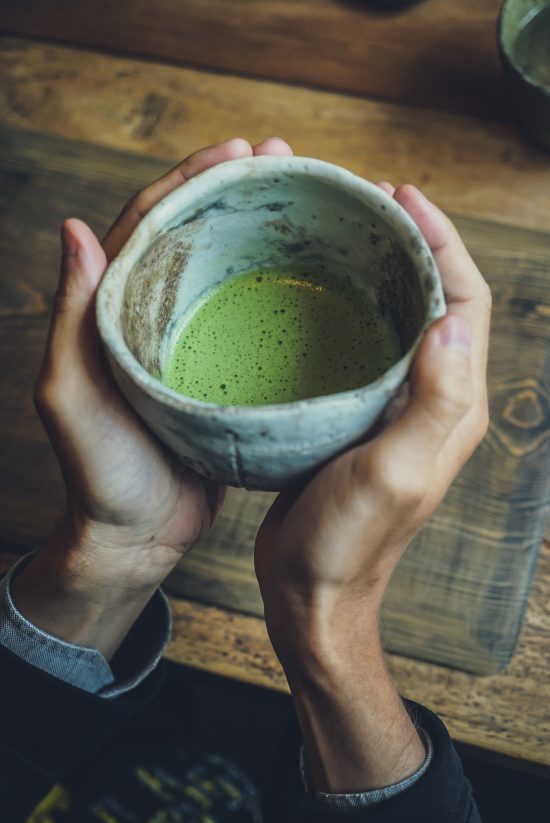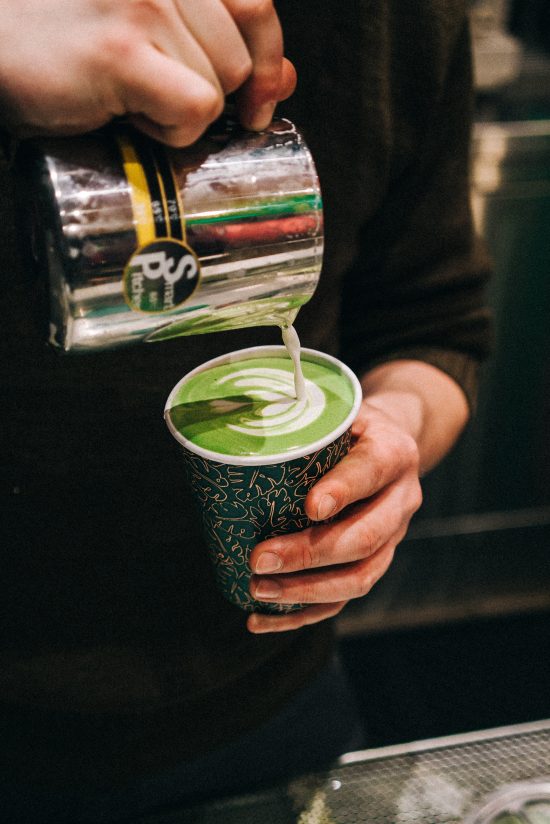
Today, we feature matcha in our series that explores the history and background of popular ingredients for café items.
BY EMILY JOY MENESES
SPECIAL TO BARISTA MAGAZINE ONLINE
Photos sourced from Unsplash
From the editor: In an effort to better understand some recently popularized ingredients in café menus, we’re exploring the history of where some of these ingredients came from, how to use them, and how others can explain to their customers these ingredients’ significance. Last week we featured turmeric. You can also read about matcha and how to use it in your coffee shop in the latest issue of Barista Magazine.
These days, matcha is a staple in many coffee markets in the United States. This high-grade form of green tea has conquered the café world and beyond, serving as the centerpiece ingredient of everything from lattes to cake and even noodles (yes, you heard that right—matcha noodles).
But how did this café staple come to be? Matcha’s origins can be traced all the way back to China’s Tang dynasty, which lasted between the seventh and 10th centuries. During this time, Buddhist monks would pulverize green tea leaves into a fine powder, then mix it with water and salt: a form of tea preparation that would become even more widespread during the Song dynasty of the 10th to 13th centuries.

In the 11th century, traditional matcha preparation was first shared with Japan, where it remains a prominent aspect of the country’s culture. Today, the tea leaves used for matcha are cultivated primarily in two regions of Japan: Uji in Kyoto, and Nishio in the Aichi Prefecture.
Green Tea Powder Vs. Matcha Powder
When drinking matcha, one key thing to note is the difference between green tea powder and matcha powder. Matcha powder is a form of green tea powder—but not all green tea powder is matcha powder. Though green tea powder and matcha powder both come from the Camellia sinensis plant, matcha has its own unique growing origins, texture, color, and flavor.
Unlike green tea, which various regions around the world grow, matcha is strictly grown in Japan. In addition, while green tea comes from both sun-grown and shade-grown plants, matcha is always made from plants that are shaded during the last month of cultivation. This period of shade helps lower the plants’ rate of photosynthesis and increase levels of L-theanine, chlorophyll, and antioxidants—all of which give matcha its bright green color and distinct, full-bodied flavor, as well as versatile health benefits for consumers.
Making Matcha Powder
The process of making matcha powder is long and arduous. The tea leaves are plucked during springtime, then steamed and air-dried; from there, they are sorted by texture, de-stemmed, and de-veined, then refrigerated for several months to cool. During this refrigeration period, the flavors of the leaves are able to fully develop, until the leaves are finally taken to be ground with granite stones to make matcha powder.
Experts emphasize that the grinding process must be done slowly, because grinding too quickly would cause the leaves to oxidize and become brown. Each careful step is what makes matcha what it is; for example, green tea powder is gritty compared to matcha powder because it isn’t de-stemmed and de-veined in the same way.
Understanding the Different Grades of Matcha
Matcha is available in different grades; One form is ceremonial, which uses younger tea leaves and thus makes it the highest quality. The second grade is culinary, which uses older, more bitter leaves, making it the lowest. From there, culinary matcha has five sub-categories: premium, café, classic, ingredient, and kitchen.
Traditional Japanese tea ceremonies use ceremonial-grade matcha. Delicate, airy, and slightly grassy with a flavor profile more mild and naturally sweet than other grades of matcha, ceremonial-grade matcha is traditionally only served mixed with hot water (sugar or milk covers all of the high-quality flavor).
Culinary matcha has a lower price point than ceremonial-grade matcha, making it more common for everyday use. It’s what you’d find in matcha lattes or matcha food products, and the varying sub-categories of culinary matcha also produce subtly varying flavors and consistencies.

Matcha Tea Ceremonies
In Japan, traditional matcha tea ceremonies often require hours of preparation, and a full-length formal ritual can last up to four hours, made up of an array of precise hand movements and careful choreography. To those who host traditional matcha tea ceremonies, matcha is so much more than a drink—it’s a relic of ancient Zen Buddhist practice.
Before the ritual, guests typically gather in a special waiting room known as a machiai. After all of the guests have arrived, they’re led across dew-covered ground, which is said to cleanse the energy of the outside world. To further purify themselves before entering the tearoom, guests wash their hands and mouths in a stone basin.
At this point, the host will greet each guest with a silent bow and welcome them into the site of the tea ritual. Food is often served (sometimes even a three-course meal) until it’s finally time for the matcha ceremony.
During the matcha ceremony, the host will add matcha powder to a bowl, then whisk it with a traditional bamboo whisk and a touch of hot water until a paste is formed. Once the paste reaches the proper consistency, more hot water is added, forming a thick, rich, and vibrant tea. The matcha bowl is then handed from guest to guest to sip from, with each person making sure to slightly turn and wipe the bowl before passing it to the next person. Once the bowl has made its way back to the host, the tools are cleaned and the ceremony is finished.
The room where the tea ceremony is held is believed to be a sanctuary: a place of peace, stillness, and purity separated from the outside world. This is why the pre-ceremony purification rituals are so important, and why every measured movement made within the tearoom is sacred. From the way it’s grown to the way it’s traditionally prepared, every aspect of matcha is meditative: a reflection of Zen Buddhist principles of focus, presence, and enlightened clarity.

ABOUT THE AUTHOR
Based in Los Angeles, Emily Joy Meneses (she/her) is a writer and musician passionate about culture and collective care. You can regularly find her at Echo Park Lake, drinking a cortado and journaling about astrology, art, Animal Crossing, and her dreams. Explore her poetry, short stories, and soundscapes on her website.

